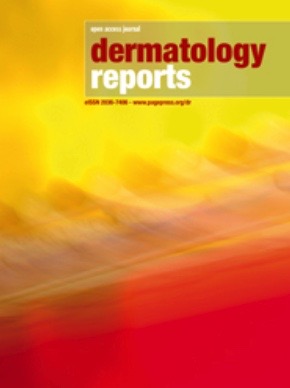Global Childhood Vaccination Efforts Stalled: Implications for Sustainable Development Goals
Overview of Vaccination Trends and Challenges
Since 2010, global efforts to vaccinate children have stagnated, leaving millions vulnerable to preventable diseases such as tetanus, polio, tuberculosis, and measles. A recent analysis published in The Lancet highlights a decline in measles protection in 100 countries between 2010 and 2019, reversing decades of progress, including in high-income countries that had previously eliminated the disease.
Impact on Sustainable Development Goals (SDGs)
Vaccination is a critical intervention aligned with several SDGs, including:
- SDG 3: Ensure healthy lives and promote well-being for all at all ages.
- SDG 1: End poverty in all its forms, as health is a key factor in economic stability.
- SDG 10: Reduce inequalities by improving access to healthcare services globally.
The decline in vaccination coverage threatens progress toward these goals by increasing the risk of infectious disease outbreaks and child mortality.
Key Findings from the Vaccination Analysis
- Vaccination coverage for the diphtheria-tetanus-whooping cough vaccine nearly doubled from 40% to 81% since the World Health Organization (WHO) established its routine immunization program in 1974.
- Measles vaccination rates increased from 37% to 83%, with similar improvements for polio and tuberculosis vaccines.
- Following the COVID-19 pandemic, vaccination rates dropped significantly:
- Approximately 15.6 million children missed the diphtheria-tetanus-whooping cough and measles vaccines.
- Nearly 16 million children were not vaccinated against polio.
- 9 million children missed the tuberculosis vaccine, with sub-Saharan Africa most affected.
- More than half of the 15.7 million unvaccinated children in 2023 reside in eight countries: Nigeria, India, Congo, Ethiopia, Somalia, Sudan, Indonesia, and Brazil.
Challenges Affecting Vaccination Rates
- Vaccine Hesitancy: A rise in parents skipping vaccinations due to misinformation has led to outbreaks of measles and whooping cough in countries like the UK and the US.
- Funding Cuts: Withdrawal of US support from the WHO and reductions in international aid have raised concerns about future immunization coverage.
- COVID-19 Pandemic: Disruptions caused by the pandemic have directly contributed to reduced vaccination rates worldwide.
Global Health Implications and Recommendations
The WHO has reported an 11-fold increase in measles cases in the Americas in 2024 compared to the previous year, with doubling infections in Europe and persistent prevalence in Africa and Southeast Asia. Experts emphasize the global risk posed by vaccine-preventable diseases and the necessity of restoring and enhancing vaccination programs to meet SDG targets.
Conclusion
Vaccination remains one of the most effective public health interventions after clean water, crucial for achieving SDG 3 and related goals. Immediate action is required to reverse declining vaccination trends, combat misinformation, and ensure equitable access to vaccines worldwide to protect children and communities from preventable diseases.
Funding and Research Support
The study was funded by the Bill & Melinda Gates Foundation and Gavi, The Vaccine Alliance, with research conducted by the Institute for Health Metrics and Evaluation at the University of Washington.
1. Sustainable Development Goals (SDGs) Addressed or Connected
- SDG 3: Good Health and Well-being
- The article focuses on vaccination efforts to prevent diseases such as tetanus, polio, tuberculosis, measles, and whooping cough, directly relating to ensuring healthy lives and promoting well-being for all ages.
- SDG 6: Clean Water and Sanitation
- Referenced indirectly as vaccination is described as the most effective intervention after clean water for protecting children’s health.
- SDG 17: Partnerships for the Goals
- The article mentions funding and support from organizations such as the Bill & Melinda Gates Foundation, Gavi, The Vaccine Alliance, and WHO, highlighting the importance of global partnerships.
2. Specific Targets Under Those SDGs Identified
- SDG 3 Targets:
- Target 3.3: End epidemics of communicable diseases including vaccine-preventable diseases such as measles, polio, tuberculosis, and whooping cough.
- Target 3.b: Support the research and development of vaccines and medicines for communicable diseases and provide access to affordable vaccines.
- SDG 6 Target:
- Target 6.1: Achieve universal and equitable access to safe and affordable drinking water for all (implied as a complementary health intervention).
- SDG 17 Target:
- Target 17.3: Mobilize additional financial resources for developing countries to support health initiatives such as vaccination programs.
- Target 17.6: Enhance international cooperation on and access to science, technology, and innovation for health improvements.
3. Indicators Mentioned or Implied to Measure Progress
- Vaccination Coverage Rates:
- Percentage of children receiving three doses of the diphtheria-tetanus-whooping cough vaccine (increased from 40% to 81%).
- Percentage of children vaccinated against measles (from 37% to 83%).
- Number of children missing vaccinations (e.g., 15.6 million missed diphtheria-tetanus-whooping cough vaccine, 16 million missed polio vaccine, 9 million missed TB vaccine).
- Disease Incidence Rates:
- Increase or decrease in measles cases (e.g., 11-fold spike in the Americas, doubling in Europe in 2024).
- Number of deaths from vaccine-preventable diseases (e.g., deaths of nearly a dozen babies from whooping cough in Britain).
- Vaccination Exemptions:
- Rate of exemptions from vaccinations, particularly in the U.S., indicating vaccine hesitancy or refusal.
- Geographic Distribution of Unvaccinated Children:
- Concentration of unvaccinated children in specific countries (Nigeria, India, Congo, Ethiopia, Somalia, Sudan, Indonesia, Brazil).
4. Table of SDGs, Targets, and Indicators
| SDGs | Targets | Indicators |
|---|---|---|
| SDG 3: Good Health and Well-being |
|
|
| SDG 6: Clean Water and Sanitation |
|
|
| SDG 17: Partnerships for the Goals |
|
|
Source: abcnews.go.com







